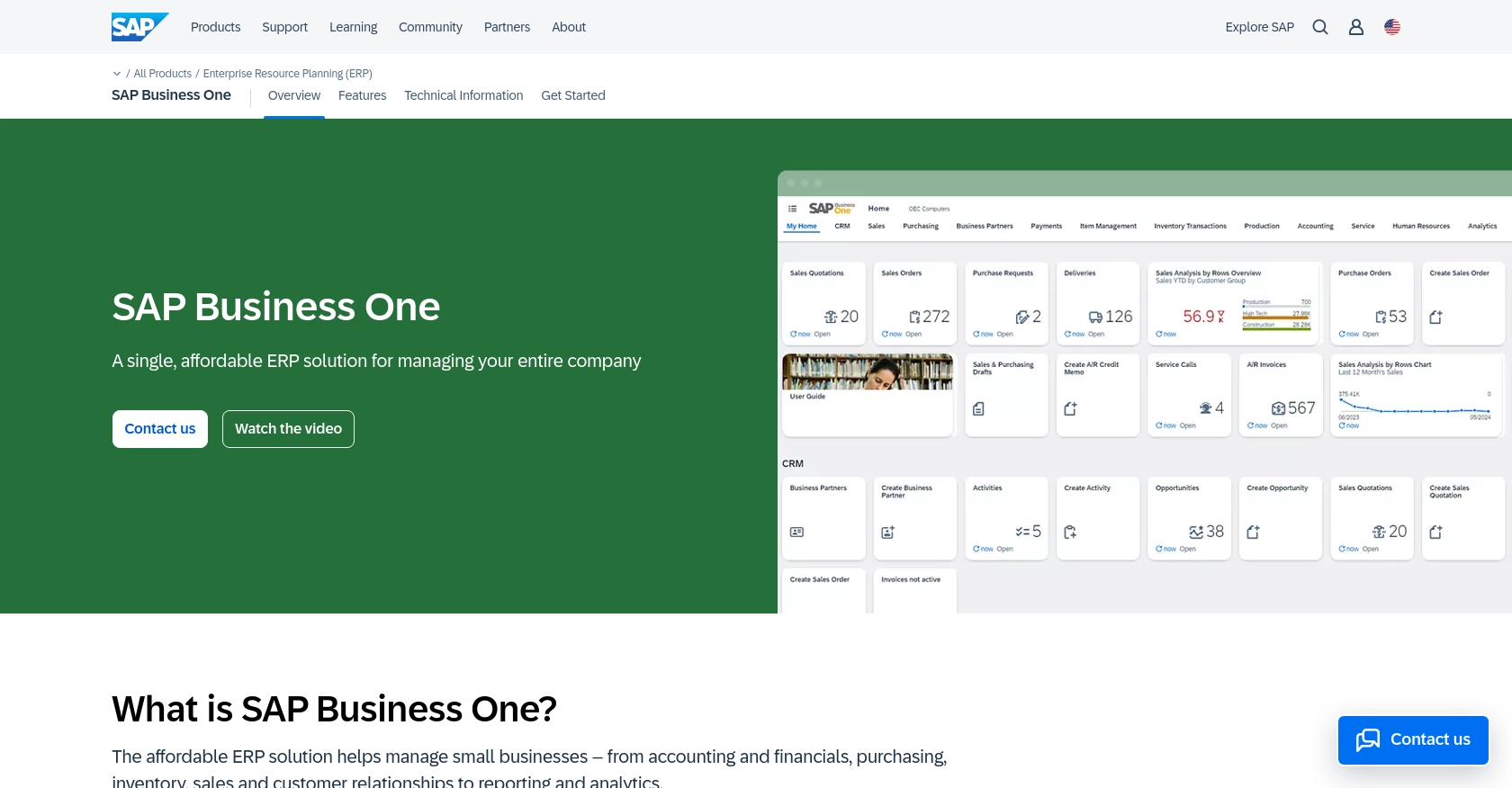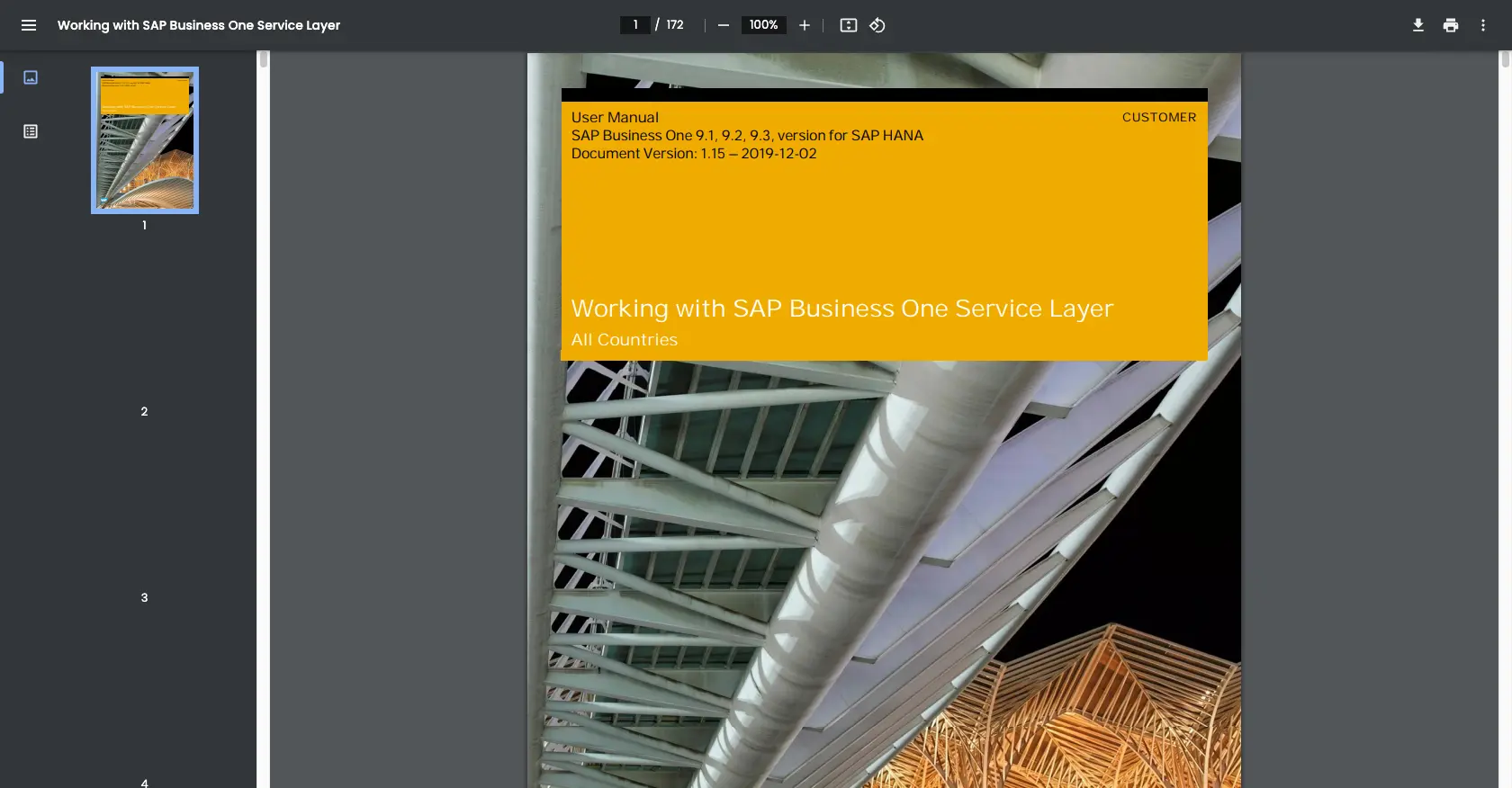Using the Sap Business One API to Get Purchase Orders in Python

Introduction to SAP Business One API
SAP Business One is a comprehensive enterprise resource planning (ERP) solution designed for small and medium-sized businesses. It offers a range of functionalities, including financial management, sales, customer relationship management, and supply chain management, all integrated into a single platform.
For developers, integrating with the SAP Business One API can significantly enhance business operations by automating processes and accessing critical business data. For example, retrieving purchase orders through the SAP Business One API allows developers to streamline procurement processes, ensuring timely and efficient order management.
Setting Up Your SAP Business One Test/Sandbox Account
Before you can start interacting with the SAP Business One API, you need to set up a test or sandbox account. This environment allows you to safely experiment with API calls without affecting live data.
Creating a SAP Business One Sandbox Account
To begin, you will need access to a SAP Business One sandbox environment. If your organization already uses SAP Business One, you can request access to a sandbox instance from your system administrator. If not, you may need to contact SAP directly or work with a SAP partner to gain access to a trial or demo environment.
Configuring OAuth Authentication for SAP Business One API
The SAP Business One API uses a custom authentication method. To authenticate, you will need to create an application within your sandbox account to obtain the necessary credentials.
- Log in to your SAP Business One sandbox account.
- Navigate to the Service Layer section.
- Create a new application by providing the required details such as application name and description.
- Once the application is created, you will receive a Client ID and Client Secret. Keep these credentials secure as they are essential for API authentication.
Generating API Keys for SAP Business One
In addition to OAuth credentials, you may need an API key for certain operations. Follow these steps to generate an API key:
- Within your SAP Business One sandbox account, go to the API Management section.
- Select Create API Key and fill in the necessary details.
- Once generated, copy the API key and store it securely.
With your sandbox account set up and authentication credentials ready, you are now prepared to start making API calls to retrieve purchase orders using Python. For more detailed information on authentication, refer to the SAP Business One Service Layer documentation.

sbb-itb-96038d7
Making API Calls to Retrieve Purchase Orders from SAP Business One Using Python
To interact with the SAP Business One API and retrieve purchase orders, you'll need to use Python, a versatile and widely-used programming language. This section will guide you through the process of setting up your Python environment, making the API call, and handling the response.
Setting Up Your Python Environment for SAP Business One API
Before making API calls, ensure you have Python installed on your machine. This tutorial uses Python 3.11.1. Additionally, you'll need the requests library to handle HTTP requests. Install it using the following command:
pip install requestsWriting Python Code to Retrieve Purchase Orders
Create a new Python file named get_purchase_orders.py and add the following code:
import requests
# Set the API endpoint and headers
endpoint = "https://your-sap-business-one-instance.com/b1s/v1/PurchaseOrders"
headers = {
"Content-Type": "application/json",
"Authorization": "Bearer Your_Access_Token"
}
# Make a GET request to the API
response = requests.get(endpoint, headers=headers)
# Check if the request was successful
if response.status_code == 200:
# Parse the JSON data from the response
purchase_orders = response.json()
for order in purchase_orders['value']:
print(order)
else:
print(f"Failed to retrieve purchase orders. Status code: {response.status_code}")
Replace Your_Access_Token with the token obtained from your SAP Business One sandbox account. The code above sends a GET request to the SAP Business One API endpoint for purchase orders and prints the retrieved data.
Running the Python Script and Verifying the Output
Execute the script using the following command:
python get_purchase_orders.pyIf successful, the script will output the purchase orders from your SAP Business One sandbox environment. Verify the results by checking the data against your sandbox account.
Handling Errors and Troubleshooting
When making API calls, it's crucial to handle potential errors. The script checks the response status code to determine success. If the status code is not 200, an error message is printed. For more detailed error information, refer to the SAP Business One API Reference.
Common error codes include:
- 401 Unauthorized: Check your access token and ensure it is valid.
- 404 Not Found: Verify the API endpoint URL.
- 500 Internal Server Error: Contact SAP support if the issue persists.
Conclusion and Best Practices for Using SAP Business One API
Integrating with the SAP Business One API to retrieve purchase orders using Python can greatly enhance your business processes by automating procurement and ensuring efficient order management. As you implement this integration, consider the following best practices to optimize your workflow:
Securely Storing SAP Business One API Credentials
Always ensure that your API credentials, such as the access token, client ID, and client secret, are stored securely. Avoid hardcoding them in your scripts. Instead, use environment variables or secure vaults to manage sensitive information.
Handling SAP Business One API Rate Limiting
Be mindful of any rate limits imposed by the SAP Business One API. Implement logic to handle rate limiting gracefully, such as retrying requests after a delay. This ensures that your application remains compliant with SAP's usage policies.
Transforming and Standardizing Data from SAP Business One API
When retrieving data from the SAP Business One API, consider transforming and standardizing the data fields to match your application's requirements. This can involve converting data formats, renaming fields, or aggregating information for easier consumption.
Leveraging Endgrate for Simplified Integrations
If managing multiple integrations becomes overwhelming, consider using Endgrate to streamline the process. Endgrate allows you to build once for each use case, reducing the need for repetitive integration efforts across different platforms. This enables you to focus on your core product while providing an intuitive integration experience for your customers.
By following these best practices, you can ensure a robust and efficient integration with the SAP Business One API, enhancing your business operations and driving success.
Read More
Ready to get started?
